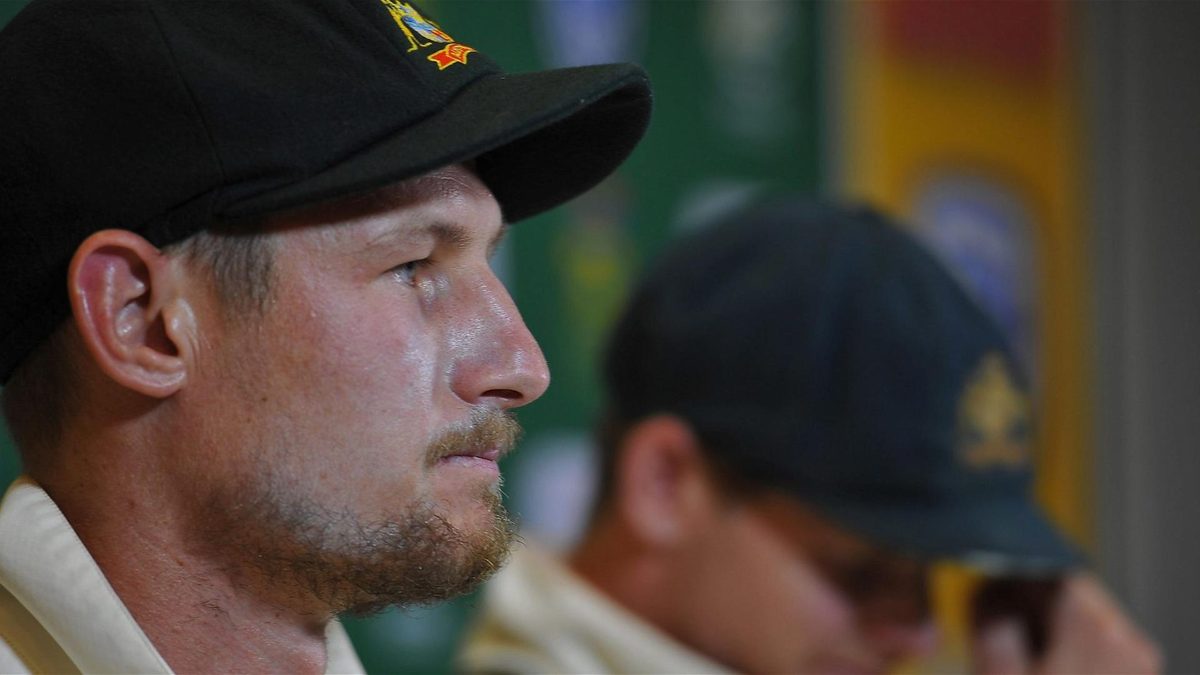
Cricket purports to be the gentleman’s game, but that isn’t always the case. Here are five of the most shocking and jaw-dropping moments in the history of the game, which only go to prove how far some will go in order to emerge victorious.
Sandpapergate
In 2018, while on a Test tour of South Africa, various members of the Australian cricket team were accused of tampering with the match ball. During the third of four Test matches, Cameron Bancroft was caught on camera rubbing the cricket ball with what transpired to be sandpaper. The intent was to create a rough side of the ball, thereby generating reverse-swing.
In the aftermath of the match, Bancroft, captain Steve Smith, and vice-captain David Warner all came out to apologise for their involvement in plotting to use sandpaper. All were given bans of varying length by Cricket Australia, with Warner and Smith out of action for over a year.
Even upon returning to the game, the pair were to be stripped of their positions as captain and vice-captain of Australia. While some felt this was harsh, others judged it a well deserved punishment for something totally unacceptable. Imagine the cricket fans betting on this fixture and losing due to tampering.
Pakistan spot-fixing scandal
Back in 2010, a cricketing scandal sent shockwaves around the globe. Three Pakistan cricketers – Mohammed Asif, Mohammed Amir and Salman Butt – were all implicated in a scandal unlike any other, with ‘spot-fixing’, a term hitherto unfamiliar to cricket, at the centre.
The trio were revealed to have conspired to deliberately bowl no-balls during a summer Test match against England at Lord’s. The conspiracy was unveiled by the News of the World after an elaborate sting operation, one which brought the integrity of the game into question.
All three players were subsequently banned for their actions, with Butt receiving the longest ban (10 years) for his perceived role as the instigator. It remains one of the most shocking betting scandals to hit the sporting world.
World Series Cricket
It was a breakaway movement that changed cricket as we know it forever. Back in the late 1970s, Australian media mogul Kerry Packer convinced some of the world’s best cricketers to defect from their national teams and instead play in his newly formed league.
World Series Cricket would introduce colourful uniforms, floodlights and new camera angles to the game – laying the foundations for the T20 revolution that would follow some three decades later. Packer had initially gone down the route of a breakaway league after his company failed to secure the broadcasting rights for Australia’s games, and his actions changed the sport of cricket forever.
Bodyline
Still to this day, one of the biggest controversies in cricket history was the so-called ‘Bodyline series’ between Australia and England in 1932/33 – notable for the visitors’ copious use of short-pitched bowling.
Led by captain Douglas Jardine, the English fast bowlers attempted to intimidate their opposition with a view to breaking the dominance of Don Bradman, Australia’s greatest-ever batsman. The tactic worked, as England ran out 4-1 series winners despite being the apparent underdogs.
While highly effective, the strategy left a sour taste in the mouth and certainly intensified the Ashes rivalry in the years that would follow. The biggest legacy of the Bodyline series is evident in the game today, as ‘bouncers’ are now viewed as legitimate deliveries rather than ungentlemanly balls.
Underarm ball
In Australia’s 1981 clash against New Zealand in the World Series Cup, the Blackcaps needed six runs from the final delivery in order to tie the game. With a slog required, Australia opted to deliver a ball that kept low – thus denying the batsman an opportunity to get it aerial.
To ensure that the final ball couldn’t be lofted, Australia captain Greg Chappell instructed his brother Trevor to bowl the last ball of the game underarm, an action that wasn’t prohibited in the competition rulebook.
It was felt by many to be contrary to the spirit of the game, especially after Richie Benaud’s famous speech against the delivery on Channel 9 in Australia.








